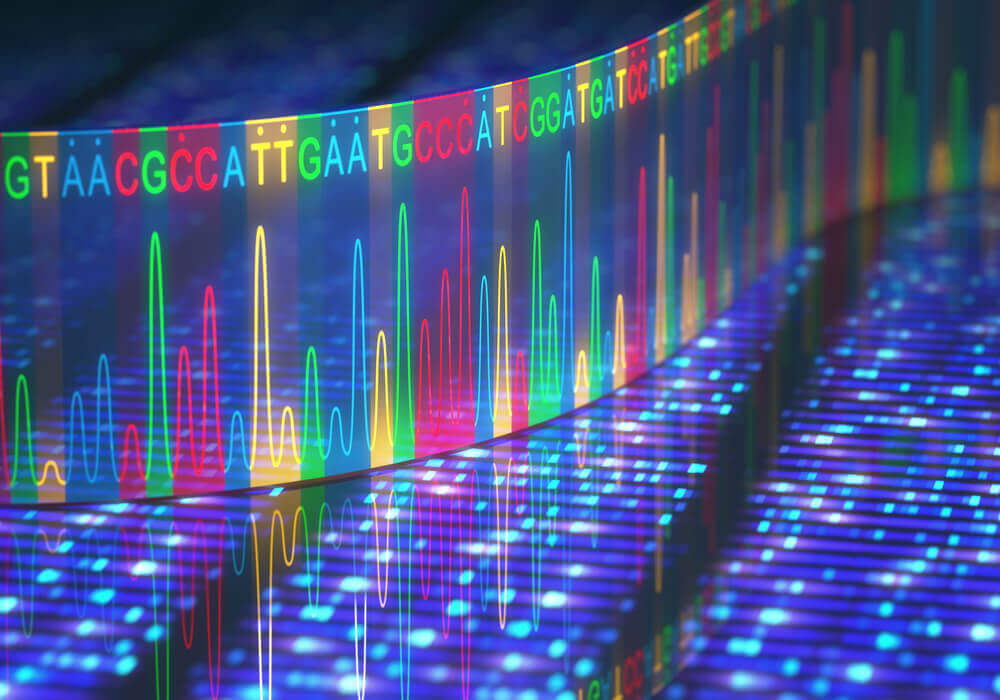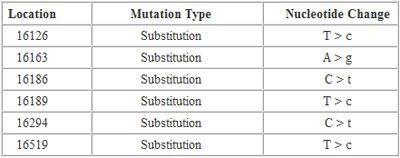The Cambridge Reference Sequence (CRS) is a fundamental part of mtDNA data analyses. It is called the Cambridge Reference Sequence because the first human mtDNA genome to be sequenced was performed by scientist at Cambridge University in 1981.
Scientists have been refining this sequence since then and a revised version was published in 1999 known as the revised Cambridge Reference Sequence (rCRS). This rCRS now is the “reference” sequence all other mtDNA profiles are compared to. So when your report indicates that you have a variation in your mtDNA, the lab is actually identifying regions of your DNA that differ from the rCRS.
Following is an example. This report shows six variations in the HVR1 region, meaning that the HVR1 sequence of this person differs from the rCRS at six different locations.
For example, the 16126 T>C substitution means that the persons mtDNA is different from the rCRS at location 16126. It shows that the rCRS has a “T” at this location, but the person tested has a “C.”

Trace Your Maternal Line
Over 100 free ancestry web apps including Marie Antoinette, the Romanov Family, etc. Login to access your maternal ancestry test results.
Free ancestry web apps are available to users who have taken the mtDNA Test.
Already took the test? Get started for FREE!
 The key to remember is that when the results of mtDNA testing are used for genealogical purposes, the results are compared to the rCRS and mutations are reported as “differences” between the results and the rCRS.
The key to remember is that when the results of mtDNA testing are used for genealogical purposes, the results are compared to the rCRS and mutations are reported as “differences” between the results and the rCRS.
This can sometimes confuse beginner genetic genealogists, because instinctively we often think that when scientists look for mutations, they should be comparing our mtDNA to that of the earliest human DNA to see how our DNA has changed over time. However, that is not how the research community approaches mtDNA profiling. The consensus within the scientific community is that mtDNA would always be compared to the rCRS.

